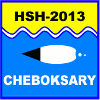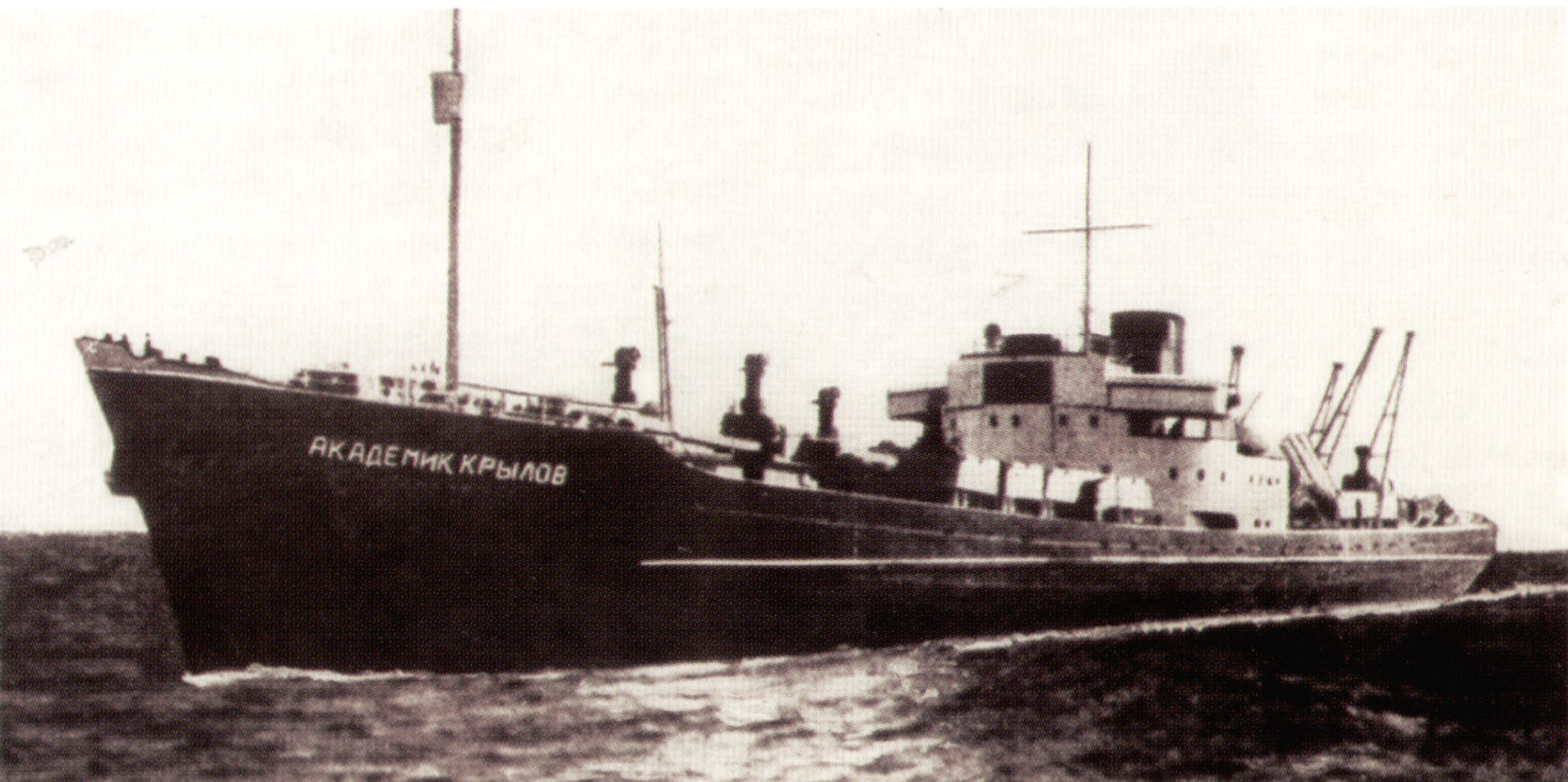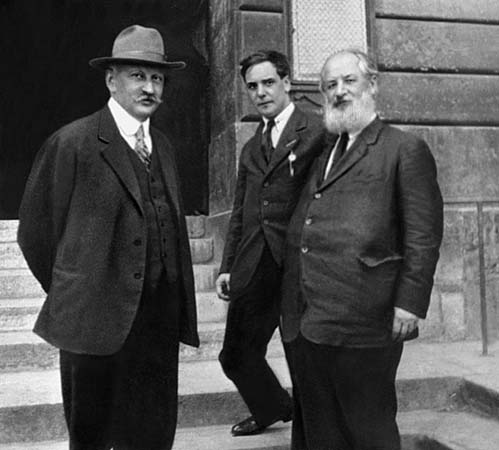AN Krylov
The legacy of AN Krylov
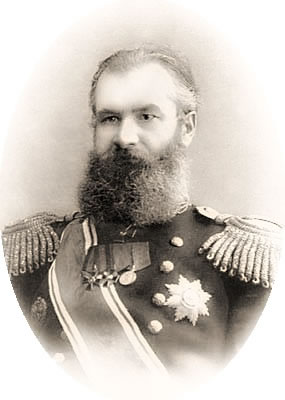
Krylov - the founder of the theory of the ship, the author of numerous works on the theory of magnetic and gyro compasses, in artillery, engineering, mathematics and astronomy. Three times awarded the Order of Lenin and Hero of Socialist Labor, laureate of Stalin Prize (1941). Since 1914 he is - a corresponding member, and since 1916 - Member of the Academy of Sciences. In honor of AN Krylov named a crater on the moon. Academy of Sciences was established by the award named after academician AN Krylov. The prize is awarded "for outstanding work on the use NIJ computers in solving problems in mechanics and mathematical physics ki." Name Krylov was awarded the head, a leading research institute of shipbuilding industry of the Soviet Union - the Krylov Shipbuilding Research Institute. Acad. Krylov.
Family
Krylov was married to Elizabeth Dranitsyn Dmitrievna. Their daughter Anne was married to PL Kapitsa, with whom Krylov had the most cordial relations. Krylov - grandfather SP Kapitza and Kapitza AP.
Krylov in the 30s In 1931, Krylov published a paper on the subject now known as the Krylov subspace methods or Krylov subspace. The work dealt with the problems of their own values, namely, calculating the coefficients of the characteristic polynomial of a given matrix. Wing on the efficiency of computing and, like a computer scientist, calculated the cost of computing the number of "separate operations of multiplication" - the phenomenon is not typical for mathematical publishing in 1931. Krylov started with a careful comparison of existing methods, which includes an assessment of worst-case scenario of computational costs in the Jacobi Method. After that, he introduced his own method, which was best known by the time the method is widely used so far. Krylov translated into Russian, "Mathematical Principles of Natural Philosophy" Newton (1915). Krylov died October 26, 1945. He was buried on the "catwalk Literatorskie" Volkov cemetery not far from Pavlov and DM Mendeleev.
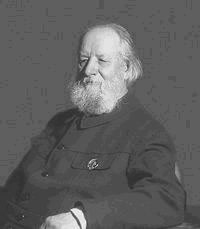
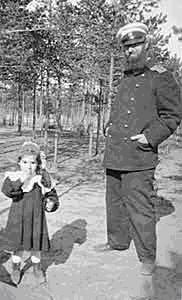
Krylov and his daughter Anna, which later became the wife of Kapitza 1904
Since 1900, Krylov actively cooperates with Stepan Makarov Osipovich, admiral and naval scientists, working on the problem of ship buoyancy. The results of this work soon became a classic and still widely used in the world. Many years later, Krylov wrote about the early ideas of Makarov's anti-roll or trim damaged ship sinking intact sections: "It seemed like a great maritime officials nonsense. Potrebovaloos 35 years ... in fact, to convince them that the idea of ??22-year-old Makarova have great practical significance, "Krylov was a talented consultant for the Navy. He himself noted that his advice saved the government more than the cost of the most modern dreadnought. In this case AN famous sharp tongue and his nimble responses to the Government and the Duma became legends. In 1916 he headed the Krylov Central Physical Observatory and the Main Military Meteorology. In 1917 he was appointed director of the Physics Laboratory of the Academy of Sciences, and later - head of the Naval Academy. In 1917, Krylov was the head of the Russian Society parohodostroitelstva and trade. After the Great October Socialist Revolution, he gave all the ships and the Soviet government continued to work on the development of the domestic fleet. In 1921, AN was sent to London as a representative of the Soviet Government, pay to reconstruct international scientific relations of the country. In 1927 he returned to the Soviet Union. Krylov is famous for his work on hydrodynamics, including the theory of motion of the ship in shallow water (he was the first who was able to explain and calculate a significant increase in hydrodynamic resistance at shallow depths) and the theory of individual waves. Krylov - author of some 300 books and articles. They cover a wide range of human knowledge, including shipbuilding, magnetism, artillery, mathematics, astronomy and geodesy. Widely used his famous table unsinkable.
Biography
Alexei Nikolaevich Krylov was born to an artillery officer. Father A. Krylov was educated at public expense, as the son of a veteran, wounded at Borodino. In 1878 he entered the Krylov Maritime College, where he graduated with honors in 1884. After graduation he worked in AN compass workshop Hydrographic Department, under the direction of P. Kolonga, where he spent his first scientific Researches on the deviation of magnetic compasses. The theory of magnetic and gidrokompasov went through his whole life. Much later, in 1938-1940, AN has published several works, which gave a complete exposition of the theory of deviation of the magnetic compass, explored questions of the theory of gyroscopic compasses, developed the theory of the influence of rolling of the ship on the compass: • Foundations of the theory of compass deviations • The disturbances of the compass, originating from the ship rolling in rough seas • On the theory of gyrocompass "In 1941, these studies were awarded the Stalin Prize. Krylov also proposed a new system dromoskopa automatically calculates the deviation of the compass. In 1887 Krylov went to the Franco-Russian factory, and then continued his studies in the shipbuilding department of the Naval Academy. After completing the course (in 1890) remained at the Academy, where he conducted workshops in mathematics and later course of the theory of the ship. According to the memoirs of the Krylov, in 1887 his "main specialty was shipbuilding, or rather, the application of mathematics to various issues of marine affairs." This started teaching activity of AN, which lasted almost until his death. In the 1890s, world-famous work of Krylov preobrel "Theory of rolling of the ship," significantly rasshirevshy Froude theory. The work of Krylov was the first comprehensive theoretical work in this area. In 1898, AN was awarded the Gold Medal of the British Society of naval architects, and this was the first time in history when the medal honored with a foreigner. Continuing the work of EIT, Krylov created the theory of damping (umireniya) board, and pitching. He first proposed gyroscopic damping (comfort) roll, which is now the most common way umireniya roll. shipbuilder, an expert in the field of mechanics, a mathematician, academician of the USSR (1916, Corresponding Member of 1914), Hero of Socialist Labor (1943) Born: 3 (15) August 1863 Place of Birth: Village Visyaga Simbirsk (now the village of Krylov Poretsky p in the Chuvash Republic) Date of death: October 26, 1945 Place of death: Leningrad

.png)
